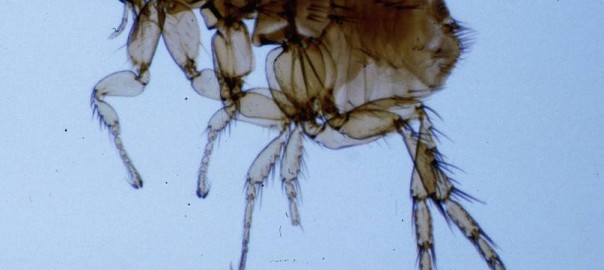Beware of Toxic Ingredients Pretending to be Natural Products
As the title of this post suggests, are you certain that the ingredients you are using in your pest repellant is as “all-natural” as the label claims that it is?
While flea repellants and other insecticides may imply or outright claim they are made from natural substances, it doesn’t ensure safety or non-toxicity.
Naturally Occurring Pyrethrins and Pyrethroids as Insecticides
The Environmental Protection Agency states that all naturally occurring pyrethrins are “botanical insecticides” that are extracted from the chrysanthemum flower variety found in Africa and Australia.
Naturally occurring pyrethrins cause paralysis and death in insects by changing the way the insects’ nerves function. Naturally occurring pyrethrins are made up of six different components including:
- Pyrethrin 1, and 2
- Cinerin 1 and 2
- Jasmolin 1 and 2
In addition to a synergist, which helps the pyrethrins work better. Known synergists mixed with pyrethrins include piperonyl butoxide and MGK-264, among others.
According to the Environmental Protection Agency, natural pyrethrums and pyrethroids are found in more than 3,500 products registered with the department as a pesticide.
The EPA states that even though the use of toxic chemicals has declined over the last decade, pyrethrin runoff into underground water supplies and sediments is causing environmental issues, all of which concern acute toxicity to fish and other aquatic life, although domestic pets aren’t affected the same way.
Insecticides Pretending to be Naturally Occurring Pyrethrins
Have you seen the flea repellants that claim to be “all natural,” and contain pyrethrins? Well, unfortunately a number of manufacturers of flea repellants are taking advantage of a consumer’s lack of knowledge concerning chemicals and their natural makeup.
Specifically and as an example, one brand of flea repellants (that we won’t name here) makes flea dips and collars, while claiming that the ingredients used in the collar to repel fleas is natural. Their label specifically states that the pyrethrins are made of “all natural synthetic Pyrethrin.”
The definition of synthetic is:
“Made by chemical synthesis, esp. to imitate a natural product.”
Knowing that the word “synthetic” means it is fake, by definition the flea repellant claiming to be natural isn’t, period.
How can something be “all natural,” if it is “synthetic?”
No matter how much the makers of this product try to formulate the product to be as close to the natural form as possible, the fact remains that the ingredient is made via a chemical process.
Because of the chemical nature of synthetic pyrethrins, you should avoid using them on your pets. Synthetics of any kind tend to have more side effects than the natural version.
Common Sense Insecticide Shopping
This is our way of letting you know that you cannot trust labels. Even the most well intentioned distributors of products that are seemingly natural might not realize the difference between “natural” and “synthetic natural,” because they see the word, “natural” and assume that it is – just as most people do.
However, this assumption is exactly how the manufacturers are able to get away with labeling unnatural and potentially toxic chemicals as “natural.”
So when you go shopping for “natural” insecticides, understand that there are indeed natural products available. When buying products as insecticides, especially those claiming to be natural, do your due diligence and read labels to ensure the manufacturer isn’t trying to get one over on you or the store selling the product, as so many do.


